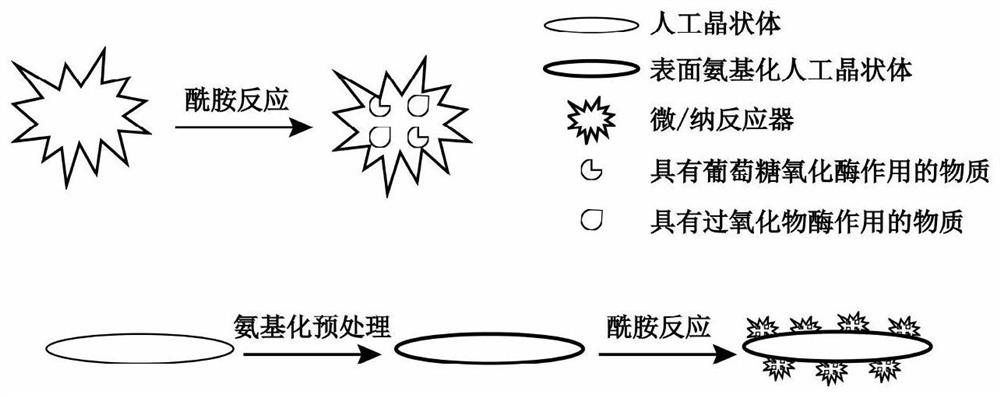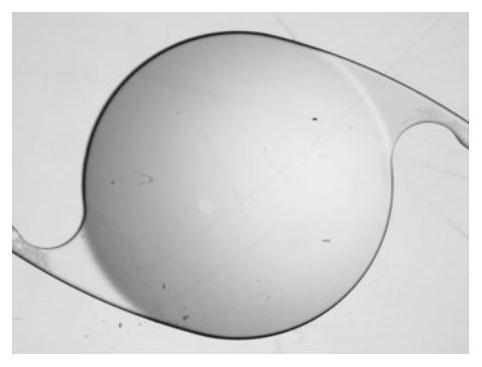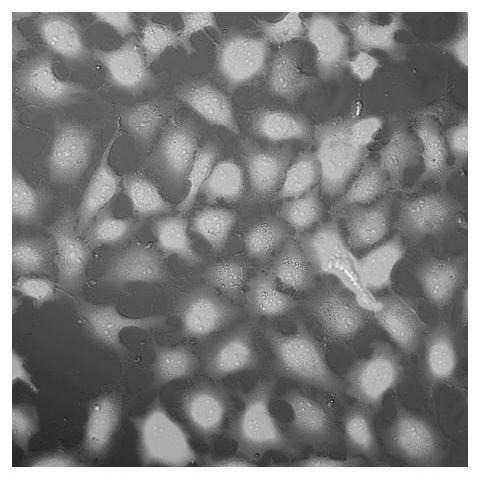Cascade catalytic platform modified intraocular lens and preparation method of intraocular lens
A technology of intraocular lens and platform, applied in the direction of prosthesis, medical formula, coating, etc., can solve the problems of toxic and side effects of tissues around the eye, and achieve the effects of high intraocular biocompatibility, low cost, and simple manufacturing process
- Summary
- Abstract
- Description
- Claims
- Application Information
AI Technical Summary
Problems solved by technology
Method used
Image
Examples
Embodiment 1
[0030] First, take a clean intraocular lens, immerse it in a 50 mg / mL polyethyleneimine aqueous solution, and stir it at room temperature for 12 hours to modify the surface of the intraocular lens with amino groups, wash it with water, and dry it with nitrogen gas for later use.
[0031] Next, take 50 mg / mL mesoporous silica nanoparticles, 10 mg / mL 1-(3-dimethylaminopropyl)-3-ethylcarbodiimide hydrochloride, 10 mg / mL N-hydroxy Succinimide was uniformly mixed with 10 mg / mL glucose oxidase and 10 mg / mL horseradish peroxidase in the aqueous system, adjusted to pH 7.4, stirred at 4°C for 24 hours, washed with phosphate aqueous buffer solution for 3 The second time, the cascade catalytic platform was obtained by centrifugal collection.
[0032] Finally, take 50 mg / mL Cascade catalytic platform, 10 mg / mL 1-(3-dimethylaminopropyl)-3-ethylcarbodiimide hydrochloride, 10 mg / mL N-hydroxysuccinyl Mix the amines uniformly in the aqueous solution system, put them into the surface-aminated ...
Embodiment 2
[0038] First, take a clean intraocular lens, immerse it in a 0.3 mg / mL polyethyleneimine aqueous solution, and stir it at room temperature for 24 hours to modify the surface of the intraocular lens with amino groups, wash it with water, and dry it with nitrogen gas for later use.
[0039] Next, take 0.5 mg / mL protein scaffold, 0.1 mg / mL 1-(3-dimethylaminopropyl)-3-ethylcarbodiimide hydrochloride, 0.1 mg / mL N-hydroxysuccinimide and 0.01 mg / mL gold nanoparticles and 0.01 mg / mL hemoglobin were uniformly mixed in the aqueous solution system, adjusted to pH 7.2, stirred at 4°C for 12 hours, washed 3 times with phosphate aqueous buffer solution, and collected by centrifugation to obtain the cascade catalytic platform.
[0040] Finally, take 0.5 mg / mL Cascade catalytic platform, 0.1 mg / mL 1-(3-dimethylaminopropyl)-3-ethylcarbodiimide hydrochloride, 0.1 mg / mL N-hydroxysuccinimide Mix the amines uniformly in the aqueous solution system, put them into the surface-aminated intraocular l...
Embodiment 3
[0042] First, take a clean intraocular lens, immerse it in a 20 mg / mL polyethyleneimine aqueous solution, and stir it at room temperature for 36 hours to modify the surface of the intraocular lens with amino groups, wash it with water, and dry it with nitrogen gas for later use.
[0043] Next, take 20 mg / mL polymersomes, 5 mg / mL 1-(3-dimethylaminopropyl)-3-ethylcarbodiimide hydrochloride, 5 mg / mL N-hydroxysuccinyl Amine, 1 mg / mL graphitic carbon nitride nanomaterials and 1 mg / mL ceria nanoparticles were uniformly mixed in the aqueous solution system, adjusted to pH 7.0, stirred at 4°C for 6 hours, washed with phosphate aqueous buffer solution for 3 The second time, the cascade catalytic platform was obtained by centrifugal collection.
[0044] Finally, take 20 mg / mL Cascade Catalytic Platform, 5 mg / mL 1-(3-dimethylaminopropyl)-3-ethylcarbodiimide hydrochloride, 5 mg / mL N-hydroxysuccinyl Mix the amines uniformly in the aqueous solution system, put them into the surface-aminate...
PUM
 Login to View More
Login to View More Abstract
Description
Claims
Application Information
 Login to View More
Login to View More - R&D
- Intellectual Property
- Life Sciences
- Materials
- Tech Scout
- Unparalleled Data Quality
- Higher Quality Content
- 60% Fewer Hallucinations
Browse by: Latest US Patents, China's latest patents, Technical Efficacy Thesaurus, Application Domain, Technology Topic, Popular Technical Reports.
© 2025 PatSnap. All rights reserved.Legal|Privacy policy|Modern Slavery Act Transparency Statement|Sitemap|About US| Contact US: help@patsnap.com



